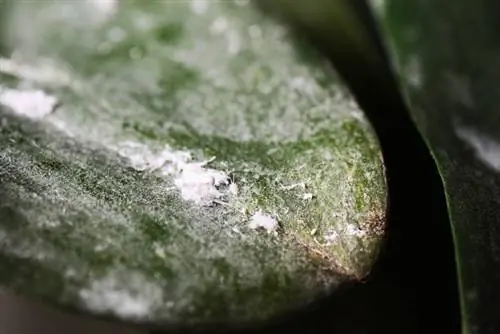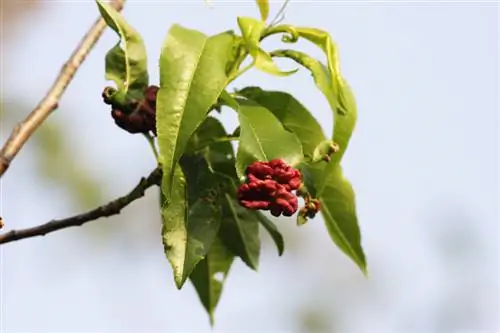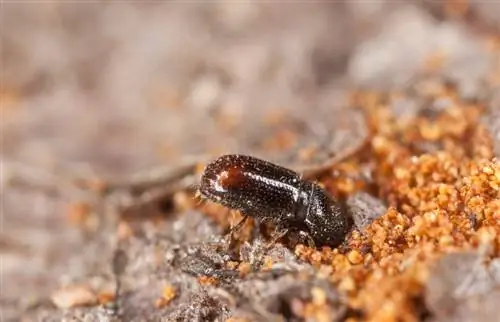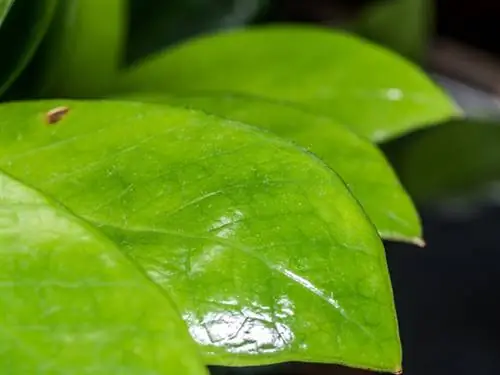- Author admin [email protected].
- Public 2023-12-16 16:46.
- Last modified 2025-06-01 06:02.
It shakes our gardener's heart to the core when the lovingly cared for orchid falls ill. Now a detailed analysis of the causes is important in order to choose the right treatment method. This overview gives you the most important symptoms of common orchid diseases with tips on possible treatment methods.

What orchid diseases are there and how can you treat them?
Orchid diseases can be caused by fungal infections, bacteria, lice or improper care. Treatments include cutting off affected parts, natural remedies such as cinnamon, garlic decoction, vinegar water or soft soap, as well as adjusting the care conditions.
Detecting and treating fungal infections - this is how it works
Stubborn fungal infections are widespread among orchids. Regardless of the current pathogen, the disease manifests itself as a white coating due to powdery mildew or as brown-black spots due to leaf spot disease on the previously lush green leaves. If the infestation is limited to the foliage without affecting shoots, bulbs or aerial roots, combat the fungal disease with natural means. This is how it works:
- Quarantine the infected orchid to prevent further spread
- Cut off the affected leaves with a disinfected scalpel (€3.00 on Amazon) and throw them in the trash
- For brown leaf spots, mix a paste of lime-free water and cinnamon and brush the plant with it
- If the coating is white, add 125 ml of fresh milk to 1,000 ml of soft water and spray every 2 days
Ecologically oriented orchid gardeners also treat these diseases with garlic decoction. To do this, bring 500 ml of water to the boil and pour over 4-5 crushed garlic cloves. After half a day, strain the liquid and spray the infected orchid with the decoction every 2 days.
Bacterial diseases target soft-leaved orchids
If sharply defined, black spots without a light edge appear on orchid leaves, you are dealing with a life-threatening bacterial disease. As the spots expand, the remaining tissue becomes slimy and moist and the foliage dies. The popular Phalaenopsis in particular are susceptible to infestation due to their soft leaves. How to combat orchid disease:
- Isolate the diseased orchid from other plants immediately
- Cut off the affected leaves with a disinfected scalpel (€3.00 on Amazon)
- Sprinkle the cuts with cinnamon or charcoal ash
In the quarantine room, the orchid is no longer sprayed and watered more sparingly. As long as the plant has a stable constitution thanks to professional care, it will fight off the bacteria and recover. Effective treatment methods are not yet available, so weakened orchids are hopelessly lost. There has been hope for some time now, as fungicides based on difenoconazole have proven to be helpful in practice.
Flower fall is not always a symptom of illness
If the foliage is affected by a disease, sooner or later the supply of flowers will come to a standstill and they will fall off. Successfully combating the disease on the leaves also stops the flower fall. However, if the flowers fall off despite he althy leaves, the problem arises from an omission in the care protocol. To get to the bottom of the cause, carefully examine the site conditions:
- Cold drafts over a long period of time cause the flowers to fall off
- Continuously warm heating air from below damages buds and flowers
- When there is a lack of light, the orchid drops its flowers
Do not place a fruit basket with ripening apples, pears or similar fruits near your orchids. The escaping ripening gas ethylene causes the flowers to wilt prematurely.
Lice carry sooty mold with them
Lice of all kinds act as biting and sucking pests. During their nefarious activities, aphids, scale insects and the like excrete honeydew. This sugary excretion forms an ideal breeding ground for sooty mold. This is a widespread black fungus that begins to spread on the undersides of leaves. The resulting black spots hinder vital photosynthesis. Fighting lice also cures the disease. This is how it works:
- Shower the lice-infested orchid with as hard a jet of water as possible
- Then wipe the leaves on the top and bottom with vinegar water
- Alternatively, make a spray solution from 1 l of water and 15 ml of pure soft soap and use every 2 days
Stay on the heels of the lice until there are no more pests on the leaves. If you are dealing with hardened scale insects, they are immune to the classic soap solution. In this case, you have to dab the lice individually with a cotton swab dipped in alcohol. Most orchids react to large-area spraying with alcohol-containing solutions by dropping their leaves.
Tip
One of the main pillars in the care of orchids is the use of lime-free water. Collected and filtered rainwater is ideal, as the noble flowers are used to in the tropical rainforest. Where there is no space for a rain barrel, resourceful hobby gardeners use this trick: 1 liter of peat is poured into a cotton bag and hung in a large watering can. Within 3 days, the peat has removed a large part of the lime from the water.






